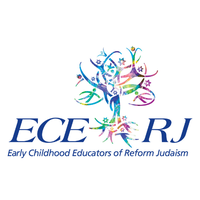
A year ago, when news of the attacks on Israel unfolded, I found myself in disbelief. In the time since, I’ve realized how it’s had a profound impact on families, parents, and educators. Though it’s been a year, I still grapple with the same questions I had on Oct. 7th; and I wonder, how can we move forward in these uncertain times?
As a parent, educator and preschool director, I know that children learn by example. I know that through our actions and words, during this year of war and always, children still take their cues from us. But some things have changed.
So, what is different? What has changed?
Our love for Israel and the Israeli people has only grown stronger. Through social media feeding us constant reminders of the war and hostages, from colleagues and families sharing updates of loved ones abroad, we are connected to one another in our care and concern. Regardless of what we hear and see from and about Israel, as educators, we have a job to do.
In the last year I have come across a myriad of resources and support guiding educators about how to talk to children about the conflict in Israel. At our Jewish preschool, we face the challenge of balancing how we talk about Israel with the realities of the situation at large. We do not talk about Hamas, or the war, or the extent of the violence in the area. Instead, we talk about the beauty of Israel, its customs, people and history. We share stories and pictures. We play “Hatikvah.” We sing “Am Yisrael Chai.” Through our actions and our words, we rise above. We lift each other up in song and in prayer and in meaningful, age-appropriate lessons for our young learners.
Jewish pride: Through values-rich stories, we remind our preschoolers that the Jewish people have deep, remarkable history rich in tradition.
Connection to Israel: We teach our students about Israeli culture: geography, foods, and traditions through stories, pictures, video, and regular connections with preschools in Israel.
The Israeli flag: We connect with the Israeli flag, whose identification is made easy with the colors blue and white and the distinctive elements of the flag — the magen David, flanked by two blue stripes. Just as we draw Jewish stars, hang the Israeli flag in our classrooms and wear blue and white to symbolize our support, taking time to make our own flags is another way to remind one another of our strong Jewish identity.
Friends helping friends: We remain committed to modeling to children how we all do our part to help. We bring in tzedakah to donate to our friends in Israel, choose which organizations to donate funds that we have raised together, and remind our students that their contributions matter.
Connection to the global Jewish community: We celebrate Shabbat every Friday as a reminder that no matter what is going on around us and afar, Shabbat connects us to Jewish people all over the world. We add a special prayer for Israel and know we are not alone.
More than a year later, while so much has changed, our love, commitment and support of the children and Israel has not. It is for us, the educators, to remind us all of what is possible for our future. We are in this together, and we pray for peace.
Jen Schiffer, Director
The Community Synagogue

